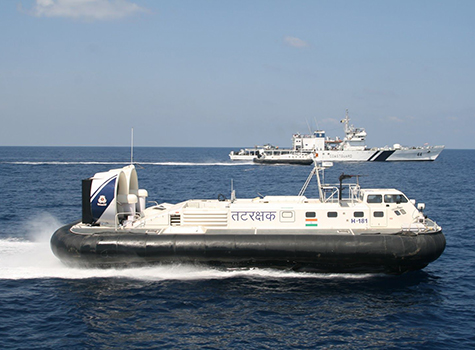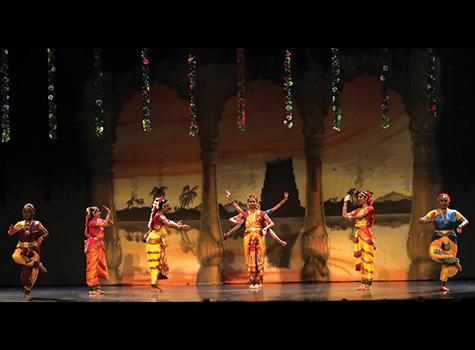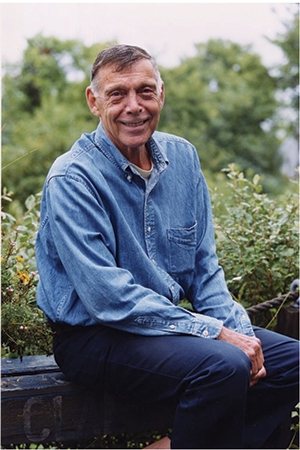
can think of no better way to begin the 86th annual American Dance Festival (ADF) than with Paul Taylor, one of the major modern dance icons who passed away in 2018, and to whom this season is dedicated. The Paul Taylor Dance Company makes its regular appearance in a few weeks, but Paul Taylor 2 opened the season in the “Icons: 3 timeless works created by 3 master choreographers” program.
Paul Taylor’s Piazzolla Caldera, a relatively recent 1997 creation, was performed, as well as Merce Cunningham’s Tread (1970), performed by Stephen Petronia Company, and Martha Graham’s Diversion of Angels (1948), performed by Graham 2. Each of the three dances, as much as seven decades old, stood their own as contemporary pieces even in the 21st century.
I particularly liked Tread. Two electronica musicians, seemingly abstracted away from the movements above them, produced live music while perched in front of and slightly below the stage in view of the audience. Seven large fans forming a line at the front edge of the stage blew air onto the audience and the ten dancers, delightfully enjoying the full stage in playful advances and lifts.
The second performance was not dance at all, but was the Musicians Concert. Several things about this season are changed up a bit, such as featuring this annual concert very early in the season. In addition to bringing performers to the area, ADF has a renowned school that attracts students from many states and countries. Musicians as well as faculty make Durham home while they teach students and create dances. It always feels like a lower key event, maybe a professional talent show, and sometimes the audience joins in and dances in the aisles.
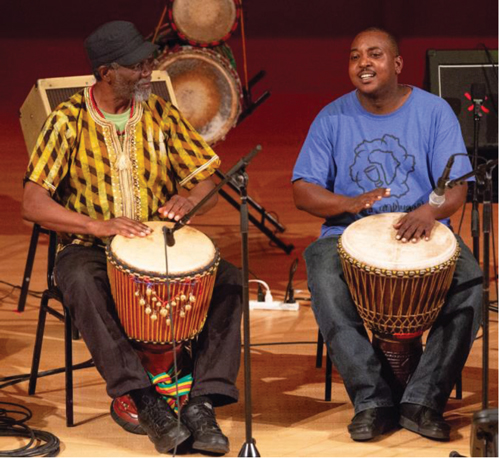
There were eleven pieces, including the always rousing percussion ending by past African American Dance Ensemble musical director Khalid Saleem and “CommUNITY” (the other musicians). Natalie Gilbert, who holds a variety of past and present positions such as ADF music director and NC School of Science and Math music teacher, performed a surprising piano composition, A Different “Take” on the Blues, which was flawlessly performed – itself a treat – but (get this!) while lying backwards and reaching over her shoulders!
As of press time, only these two shows have been presented. I’m quite excited about Mark Morris Dance Group’s tribute to the 50th anniversary of the iconic Beatles’ album, Sergeant Pepper’s Lonely Hearts Club Band. It is “accompanied live by an unprecedented chamber music ensemble of voice, soprano saxophone, two keyboards, theremin, and percussion” and interweaves songs from the album with blues and classical music.
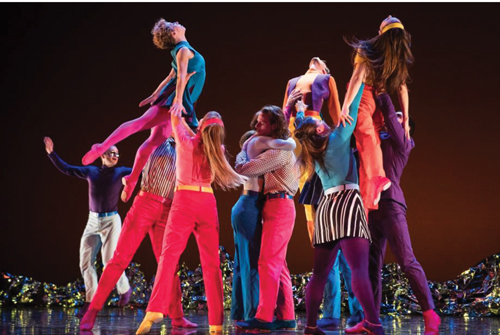
Some may recall the Wondrous Women: Solos Created by the Artists for Themselves ADF 2018 program, including tap dancer and MacArthur Fellow Chapel Hill native Michelle Dorrance. Her Dorrance Dance celebrates music and sounds of tap in SOUNDspace, originally designed for the acoustics of St. Mark’s Church in New York City.
I will have to miss what sounds like an intriguing multidisciplinary performance by Murielle Elizéon and Tommy Noonan, in which they “interweave the combined expertise of professional dancers, neuroscientists, people with Parkinson’s disease, and data informaticists”. The piece is meant to be a performance as well as research project.
We always look forward to Paul Taylor Dance Company, which rounds out June for ADF. As they often do, they will be presenting two different programs, one of which includes their powerful Promethean Fire, Paul Taylor’s reaction to the tragedy of September 11th – a reaction that, I recall from past attendance, leaves the audience with guarded hope.
The festival continues through July with performances by Pilobolus, Cuba’s Malpaso Dance Company, Rennie Harris Puremovement American Street Dance Theater and its multimedia celebration of “funk music and street dance of the 1970s … against the landscape of a video montage of African American communities of that era”, and more. Films, studio tours, and additional activities, many of which are free, are also part of ADF.
A surprise this year is that the Durham Performing Arts Center, a favorite venue of mine, is being used quite minimally; more locations at Duke University are favored. Audiences seem to favor more intimate venues, and it will be interesting to see how that changes the experiences of the performances.
The ADF website www.americandancefestival.org has the details on all the events, including ticketing. If you are on twitter, I tweet about the shows @dbarman.
Note: American Dance Festival logo and images courtesy of American Dance Festival and used with permission.

